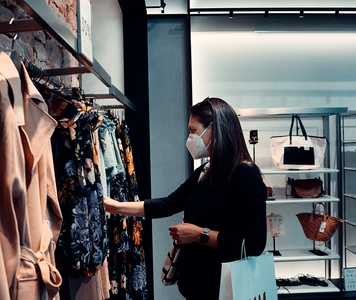In 2017, McKinsey released a report illustrating which jobs could be impacted most by automation and AI in a technology-driven world – a full two years before a pandemic uprooted the global economy.
Now as we look at the effects of COVID-19 on labor-intensive businesses, it is safe to assume that 2030 timeline may have just been pushed up significantly and an even greater number of jobs will be at risk of automation as businesses race to protect themselves from pandemic-type events in the future.
COVID-19 has shown us the impact on labor-intensive businesses.
With the economy losing billions and millions of people out of work (the U.S. just recorded its worst unemployment rate since the Great Depression), governments are spending upwards of trillions of dollars to support businesses and workers who have been forced to completely shut down during this pandemic.
Those businesses that rely heavily on physical labor and not considered essential (retailers bars/restaurants, dealerships, hotels/hospitality, even dentist offices) have had to shut down completely.
Those operations that are labor-intensive, and have stayed operational because they are considered essential, have suffered COVID-19 outbreaks. 115 different meat processing plants across 19 U.S. states have detected COVID-19. Meat processing plants are very labor-intensive, and because of the working conditions that exist within those facilities, there is very little that can be done to avoid an outbreak aside from full closures.
Businesses will be forced to automate quicker which will replace millions of jobs much sooner.
Those businesses that do survive post COVID-19 are going to be forced to find solutions that will make themselves “pandemic-proof” in the future; they simply can’t afford not to. That means relying much less on physical labor and much more on automation.
Meat plant workers, retail cashiers, delivery drivers, warehouse workers, hospitality workers are all at risk of job automation much quicker than McKinsey predicted a couple of years ago.
Those businesses that have already integrated automated solutions will need to alter them for a post-COVID world. Self-checkouts with touch screens at grocery stores and quick service restaurants will need to be altered to allow consumers a contactless way to make their purchases.
There race towards pandemic-proofing automation is on.
Here are 5 things we can expect to see as businesses race towards automation post COVID-19:
Aside from software and AI, expect to see a significant rise in demand for robotics in the race for automation. Companies and governments are going to spend billions in both operational technologies (solutions that allow companies to remain operational during COVID-19-type events) and risk-mitigating technologies (solutions that protect or mitigate contagion in future COVID-19-type scenarios). One of the biggest investments will be in robotics, where China is already seeing a massive increase in demand. Companies and governments will look to robots to help protect the worker (and eventually replace the worker) in high-risk situations, such as patient interaction at hospitals or pharmacies for simple tasks like drug dispensing. Expect to see robotics replace workers in many other industries as well, including hospitality, meat processing, and even quick-serve restaurants which will use robots to cook and prepare meals.
Rapid innovation by companies offering quick solutions at the expense of customer experience. As more money is diverted towards automation, there will be a significant shift towards innovation, which arguably is one good thing coming out of COVID-19. With rapid innovation and automation by businesses, expect there to also be a focus away from consumer-centric solutions . While pre-pandemic, technology solutions would have been focused on positive customer experiences (to create a competitive advantage), that is likely going to shift towards fast solutions that promise businesses they can remain operational in the absence of physical labor. Those businesses that still keep the customer in mind will benefit in the long-term, but unfortunately many are going to be very short-term, solutions-focused for the foreseeable future and that will likely impact the customer experience in a negative way (and probably cost a business 3x as much to eventually fix).
Unprecedented consolidation of businesses. Even before investing in technology, companies will look to drive cost savings post-COVID (that's assuming they can even survive past COVID-19) through consolidation. This will allow them to pool available resources to then focus on automation. Expect there to be a massive amount of M&A activity in the next year or two, likely starting soon with those industries most affected (e.g. airlines, hotel chains, retailers). This will be followed by significant investments in automation which will fundamentally change the look of the business, but will also ensure its viability long-term.
Forced changes that the consumer will not be ready for but will have to adopt. We have already seen significant changes in consumer behaviors, from the way we are making purchases to the products we are consuming (my company, Dig Insights, is tracking changes in consumer behaviors bi-weekly during COVID-19). During this pandemic and forced shut down, consumers have been forced to use technologies they are not used to - but that is with existing solutions that some of us have already adopted (i.e. it's easy for my mom to use Instacart because I can show her how to use it). Imagine we all have to adopt a new way of doing things at once - it would make many of us very uncomfortable. Consider air travel - plans are underway for what it will look like once restrictions are lifted, and it's suggested digital technologies and automation will play a critical role in the future of flying. Contactless check-ins, DIY bag drops, full biometric scanning, facial-scan boardings, will all be considered in an effort to reduce as many person-to-person interactions as possible. Those who are uncomfortable with it are going to try to avoid it as long as possible, but eventually will have to accept the new reality.
Substantial job losses much sooner than previously thought. While many felt that 30% of job loss due to automation by 2030 was surprising, it is now time to think about what that may look like if that timeline has been pushed up, even to 2025 (and that's assuming we had a full recovery by then). The impact it will have on the entire workforce will force us to adapt, not just in terms of education and training, but also in terms of how we keep the economy running and prevent the income gap from getting wider. This may be why the Universal Basic Income conversation has been gaining more and more traction since the beginning of COVID-19. I wouldn't be surprised if Andrew Yang's 'Freedom Dividend' idea came back to life during the rest of this year's U.S. presidential campaign.
Businesses, workers, and even governments must plan NOW for a post COVID-19 world where automation will be the focus and understand how to fit into that new world. 2020 was already being looked at as the Decade of Change and Transformation before COVID-19. Now five months in, jobs have been lost (and many already replaced), consumer behaviors have changed, and businesses have already been forced to adapt. Imagine what the next 9.5 years are going to look like.



